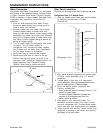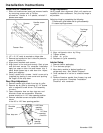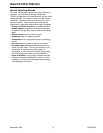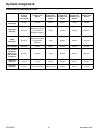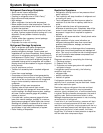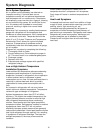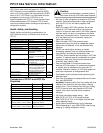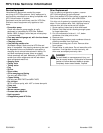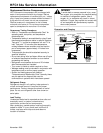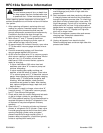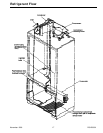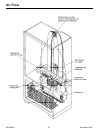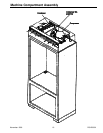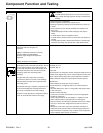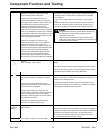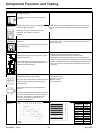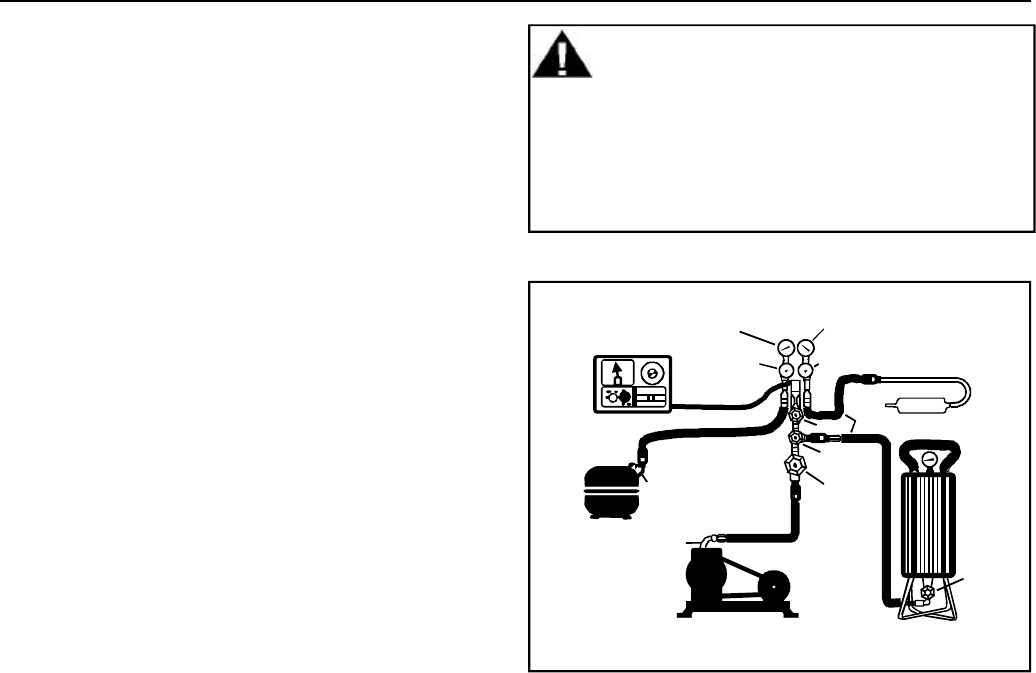
November 1996 15 RS1200001
HFC134a Service Information
Replacement Service Compressor
HFC134a service compressors will be charged with
ester oil and pressurized with dry nitrogen. Before
replacement compressor is installed, pull out 1 rubber
plug. A pop from pressure release should be heard. If
a pop sound is not heard, do not use compressor.
Positive pressure in compressor is vital to keep
moisture out of ester oil. Do not leave compressor
open to atmosphere for more than 10 minutes.
Compressor Testing Procedures
• Refer to “Temperature and Relationship Chart” for
operating watts, test points, and temperature
relationship test.
• Temperature testing is accomplished by using 3 lead
thermocouple temperature tester in specific locations.
Test point T-1 is outlet on evaporator coil and T-2 is
inlet. Test point T-3 is suction tube temperature
midway between where armaflex ends and suction
port of compressor (approximately 12 inches from
compressor).
• Thermocouple tips should be attached securely to
specified locations.
• Do not test during initial pull down. Allow one off cycle
or balanced temperature condition to occur before
proceeding with testing.
• Refrigerator must operate minimum of 20 minutes
after thermocouples are installed.
• Turn control to colder to obtain required on time.
• Wattage reading must be recorded in conjunction with
temperature test to confirm proper operation.
• Suction and head pressures are listed on
“Temperature and Relationship Chart” Normally these
are not required for diagnosis but used for
confirmation on systems which have been opened.
Refrigerant Charge
Refrigerant charge in all capillary tube systems is
critical and exact amount is required for proper
performance. Factory charges are shown on serial
plate. Do not use refrigerant other than shown on
serial plate.
Leak Testing
Undetected leaks lead to repeated service calls and
eventually result in system contaminations,
restrictions, and burned out compressors.
After recharging, sealed system must be thoroughly
tested for leaks. If a very small leak is difficult to
isolate, coat area with soap suds and observe
location of bubbles.
To avoid death or severe personal injury, never
use oxygen, air or acetylene for pressure testing
or cleanout of refrigeration system. Use of
oxygen, air, or acetylene may result in violent
explosion. Oxygen may explode on contact with
oil and acetylene will spontaneously explode
when under pressure.
WARNING
Evacuation and Charging
Vacuum Pump
.6 cm Copper
Tubing
Compressor
Compressor
Process
Tube
Charging Hose
Thermistor
Vacuum Gauge
Low Side Gauge
E
Valve
B
D
Valve
High Side Gauge
Charging Hose
Drier/Process Tube
F
Valve
Charging
Cylinder
C
A



